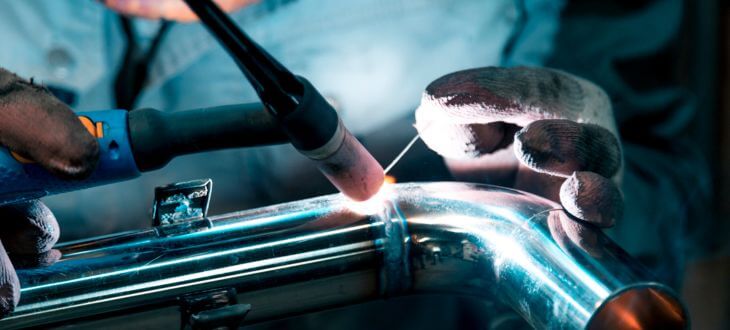Electrode welding, commonly known as Shielded Metal Arc Welding (SMAW), is a versatile and widely used technique. This form of welding is popular among professionals and hobbyists alike due to its simplicity and effectiveness in joining metals. Whether you’re considering a career in welding, tackling some home projects, or simply interested in understanding more about the process, this blog post will provide a comprehensive introduction to electrode welding, how it works, and tips for getting started.
What is Electrode Welding?
Electrode welding is a process that uses an electric arc to melt metals at the welding point. It involves an electrode and a workpiece, the two primary components of the welding circuit. The electrode is made of a metal core surrounded by a coating of chemicals and materials that stabilize the arc and shield the weld area from contaminants in the air.
The Role of the Electrode
The electrode serves two primary functions:
- Conductor of electricity: It creates the electric arc when it comes into contact with the workpiece.
- Filler material: As the electrode melts, it fills the joint between the welded pieces, forming a strong bond as it cools.
The electrode coating also plays a critical role by producing a gas shield and slag as it burns, which protects the weld from oxidation and contamination.
How Electrode Welding Works
The electrode welding process is straightforward but requires skill and practice to master. Here’s a step-by-step overview of how it works:
Safety First
It is crucial to ensure your safety before you begin welding. Wear appropriate protective gear, including a welding helmet with a proper shade, fire-resistant clothing, gloves, and boots. Make sure your working area is well-ventilated and free of flammable materials.
Setting Up the Equipment
Connect your welding machine to a power source and attach the electrode holder to the positive terminal and the work clamp to the negative terminal unless your machine specifies otherwise.
Choosing the Right Electrode
Select an appropriate electrode for the material and the type of joint you are working on. Electrodes vary by core metal and coating material, which are chosen based on the metal being welded and the desired characteristics of the weld.
Striking the Arc
With your electrode properly clamped, gently tap it against the workpiece and then pull it back slightly to establish an arc. Maintain a steady hand to keep the arc consistent.
Maintaining the Arc
Keep the electrode at a consistent distance from the workpiece, typically about the thickness of the electrode itself. Move it along the joint, melting both the base metal and the electrode to form a pool of molten metal that creates the weld as it cools.
Managing Slag and Cooling
After you complete the weld, allow it to cool naturally. Once cooled, use a hammer or brush to remove the slag, a layer of byproduct covering the weld. This reveals the weld underneath for inspection.
Tips for Effective Electrode Welding
Getting good at electrode welding takes practice, but here are some tips to help you improve:
- Maintain A Steady Arc Length: Too close, you might stick the electrode to work; too far, the arc might break.
- Choose The Right Electrode: Match the electrode type to the material and welding position.
- Control Your Speed: Move at a speed that allows the weld pool to form properly without Running Ahead Of The Arc.
- Inspect Your Welds: Look for uniformity and penetration, and adjust your technique as needed.
Common Challenges and Solutions
Like any skill, electrode welding comes with challenges. Here are three common solutions:
- Electrode Sticking: If your electrode sticks to the workpiece, it often means your arc is too short. Try maintaining a proper arc gap.
- Porosity In The Weld: This can be caused by contamination. Ensure your base metal and electrode are clean before starting.
- Irregular Weld Bead: This is often due to uneven speed or arc length. Practice maintaining consistent movement and arc control.
Electrode welding is a fundamental skill in the welding industry, and it is known for its robustness and versatility. Whether you’re a professional looking to hone your skills or a beginner starting out, understanding and mastering SMAW can be incredibly rewarding. Remember, the key to becoming proficient in welding is patience, practice, and continuous learning. You can achieve solid and high-quality welds in various applications with the right approach and techniques.
Visit Tampa Steel & Supply for Quality Metal and Metal Processing Services
Do you need help with metalworking and keeping your metal fresh? The experienced professionals at Tampa Steel & Supply are here to help. We provide the highest quality of services to our customers.
Request a Quote Online
Or Call Tampa Steel & Supply at (813) 241-2801

